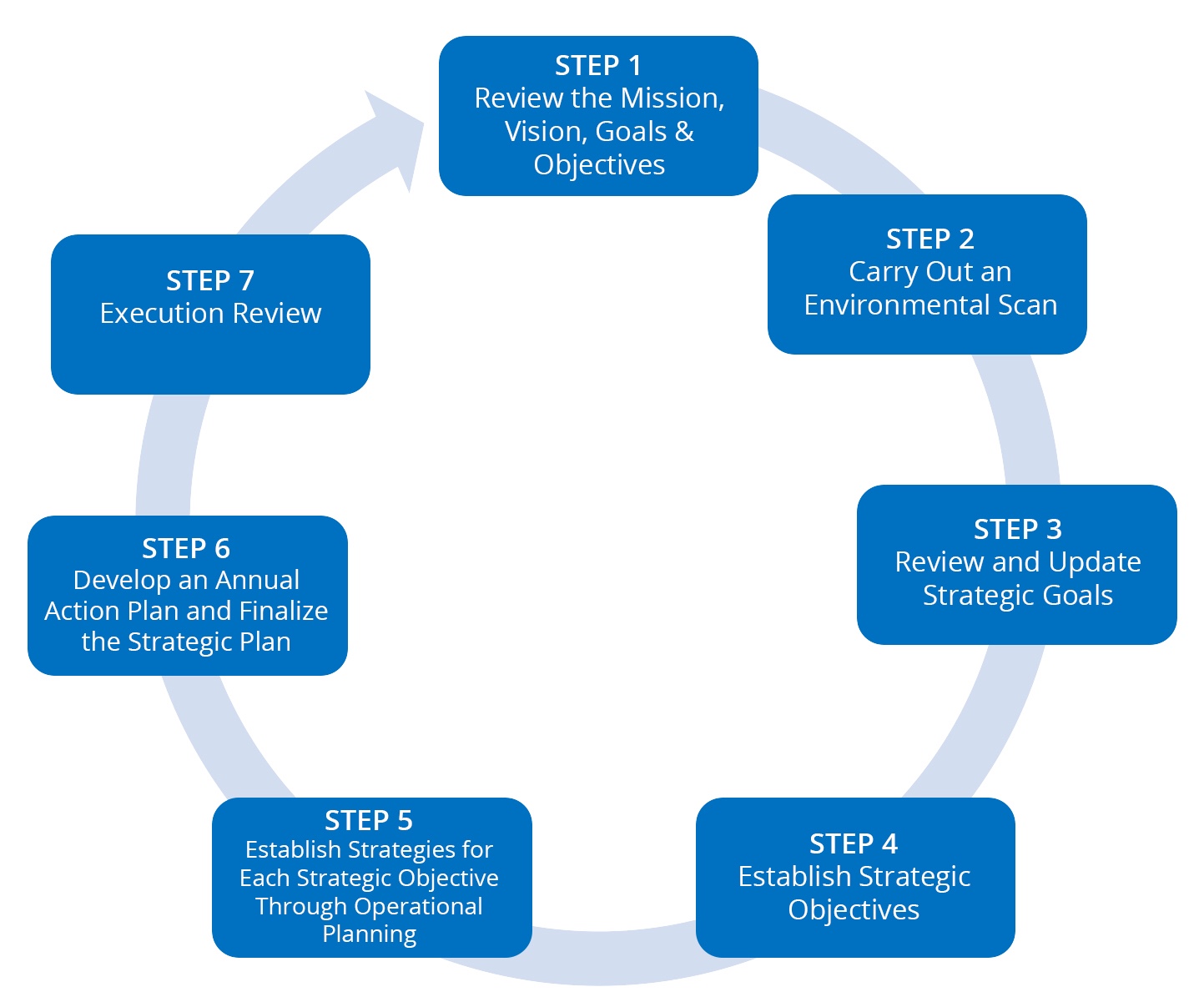Strategic plan: what is it? Identify and describe process and steps for developing a strategic plan including key outputs in each step.
A Strategic Planning is a process of conceptualizing the future from the perspective of the present and identifying options and selecting the most effective way to achieve it.
Process and Step for developing a SP:
Phase 1: Get Ready
Identify specific issues or choices that the planning process should address
Decide on the basic process to use, including roles and participation (who does what in the process, whether to use a planning committee, whether to hire a consultant, etc.
Identify the information that must be collected to help make sound decisions
The product developed at the end of this phase is a strategic planning workplan (plan for planning)
Phase 2: Vision & Mission
A vision is a mental model of a future state, built upon plausible
speculations, reasonable assumptions about the future, influenced by our own judgments about what is possible and worthwhile. It is a mental model that people and organizations can bring into being through their commitment and actions.
The vision is an image or description of what the organization aspires to become in the future. Vision statements are directional, build commitment, inspire action, and get everyone working toward the same outcome. Vision statements help us soar, while mission statements keep our feet on the ground.
Phase 3: Environment Assessment
This step requires gathering up-to-date information about the
organization internal strengths and weaknesses and its external
opportunities and threats through conducting SWOT analysis
Information is gathered from both internal and external stakeholders
about their perceptions and expectations of the organization and empirical data are collected to inform the decisions made in the next phase.
The product of this phase is a database of concrete information that will support planners in making decisions about an organization future priorities.
Phase 4: Agree on priorities
Based on results of steps 1 and 2, it is time to make decisions about the
future direction of the organization: the broad approaches to be taken (strategies) and the general and specific results to be sought (the long- term and short-term goals and objectives)
Strategies, goals, and objectives may emerge from individual inspiration, group discussion, or formal decision-making techniques, but in the end, leadership should agree on its top priorities
The product of phase 4 is an agreement on the organization priorities: the general strategies, long-term goals, and specific objectives.
Phase 5: Write SP
This step involves putting the pieces together into one coherent
document. Usually one member of the planning committee, the executive director, or a designated writer will draft a final plan document and then submit it for review by all key decision makers (usually the board and management staff ).
The reviewers should make sure that the plan answers the key questions about priorities and directions in sufficient detail to serve as a guide for the organization’s members.
Phase 6: Implement SP
The interface between the strategic directional thinking embodied in the
strategic plan and day-to-day work is a concise and easy-to-use operating
plan
It should coincide with the organization fiscal year and accommodate the
need for other, more detailed program-level planning related to funding
cycles or other reporting cycles
The essence of the operating plan is a document that defines the short-
term, concrete objectives leading to achievement of strategic goals and objectives and that is easy to use and monitor
Phase 7: M&E SP
Each organization needs to choose the appropriate length of time for planning and evaluating: a three-year (or five-year) planning cycle. The first strategic plan is completed with a three-year time horizon and a one-year annual operating plan
At the end of years one and two, progress toward the priorities of the strategic plan are assessed and adjusted as necessary, and a new annual operating plan is developed
During year three, a renewed strategic planning process is undertaken
 KB Cambodia
KB Cambodia
